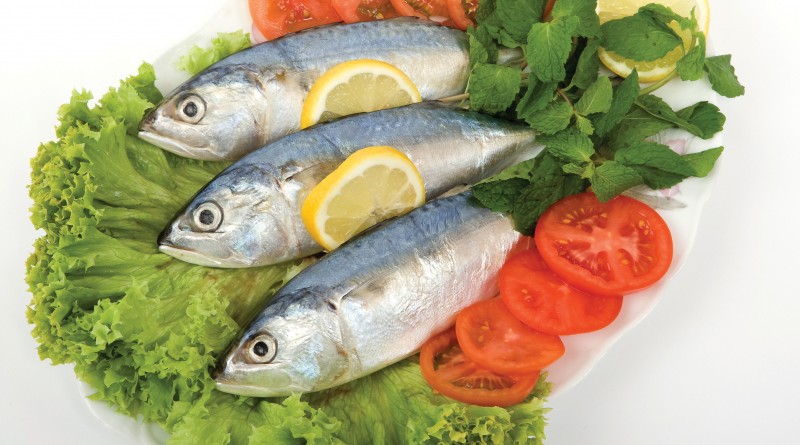Foods that Fight Inflammation
Foods that Fight Inflammation
Healthy eating implies consuming food in right amount for a healthy life. Likewise, the anti-inflammatory diet also involves scientific knowledge of selecting and preparing right types of foods in order to gain optimum health
By Dr Suneela Garg & Dr Rozaleen Dash
IInflammation is a part of the body’s immune response; without which our bodies cannot heal. But when it goes out of control — as in rheumatoid arthritis — it can damage the body. Rheumatoid Arthritis (RA) is a chronic, progressive inflammatory disorder characterized by inflammation and cellular proliferation in the synovial lining of joints that can ultimately result in cartilage and bone destruction. This inflammation of the joint lining can cause pain, stiffness, swelling, warmth and redness. RA is also the most common form of inflammatory arthritis in adults, affecting approximately 0.3-1.2% of the world’s populations and despite intensive investigations, the etiology of RA remains undefined. There are a number of factors implicated in the onset of the disease, such as:
Genetic factors
Hormonal factors
Infectious factors
Environmental, and
Dietary factors
Dietary factors are one of the major factors for inflammation. Although there are no specific nutrition guidelines for people with RA, researchers have found that a diet, rich in omega-3 fatty acids, antioxidants and phytochemicals, supplies the body with powerful anti-inflammatory nutrients. These foods are commonly a part of the Mediterranean-style diet of fish, olive oil, fruits, vegetables, nuts/seeds and beans. Results showed improvements in pain, morning stiffness, disease activity and physical function.
On the flip side are foods and beverages that have been found to reduce the risk of inflammation, and with it, chronic disease. Studies show that nuts have the property with reduced markers of inflammation. Coffee, which contains polyphenols and other anti-inflammatory compounds, also protect against inflammation. Foods that combat inflammation include: tomatoes, olive oil, and green leafy vegetables, such as spinach, kale, and collards, nuts like almonds and walnuts, fatty fish like salmon, mackerel, tuna, and sardines, fruits such as strawberries, blueberries, cherries, and oranges.
Simple Choices Can Make a Difference
All of us should eat healthy, but when our food can help treat swelling and inflammation, it makes even more sense to eat healthy. Coupled with other treatments and therapies, a diet rich in omega acids and antioxidants could keep inflammation down so you can start living pain free. The following foods and nutrients deserve special mention for their ability to quell inflammatory responses in our body:
Foods high in sugar and saturated fat can spur inflammation.
Oily fish, like salmon, mackerel, tuna and sardines, are high in omega-3 fatty acids, which have been shown to help reduce inflammation.
Consuming most of grains as whole grains, as opposed to refined, white bread, cereal, rice, and pasta can help keep harmful inflammation at bay.
Vitamin E may play a key role in protecting the body from pro-inflammatory molecules called cytokines—and one of the best sources of this vitamin is dark green veggies, such as spinach, kale, broccoli, and collard greens.
All nuts are packed with antioxidants, which can help your body fight off and repair the damage caused by inflammation.
Isoflavones, estrogen-like compounds found in soy products, may help lower CRP and inflammation levels in women.
Milk products are sometimes considered a trigger food for inflammatory diseases like rheumatoid arthritis, because some people have allergies or intolerances to casein, the protein found in dairy.
Tomatoes, another nightshade veggie, may also help reduce inflammation in some people.
Beets (and beetroot juice) helps to reduce inflammation.
Turmeric, the ingredient that gives curry its yellow colour, works in the body by helping to turn off a NF-kappa B, a protein that regulates the immune system and triggers the process of inflammation.
Anything that fits into a heart-healthy diet is good for inflammation—and that includes healthy, plant-based fats like olive oil.
Berries have anti-inflammatory properties—possibly because of anthocyanin, the powerful chemicals that gives them their rich colour.
Cherries have the highest anti-inflammatory content of any food.
Conclusion
So it calls for a time to change now! It’s the dawn of a new year and there’s no better time than now to start fresh with positive lifestyle commitments to live healthier from here on. Even subtle changes can have a huge impact on your health and well-being. Small changes can lead to big results. There is a direct correlation between inflammation in the joints and damage. Decreasing inflammation prevents joint deformities, disability, and lowers cardiovascular risk, in addition to preventing pain and joint stiffness. The bottom line when considering nutrition and RA is to maintain a healthy, well-balanced diet.
(The authors are Director Professor, HOD and Sub Dean/ Senior Research
Officer, Maulana Azad Medical College, New Delhi)

